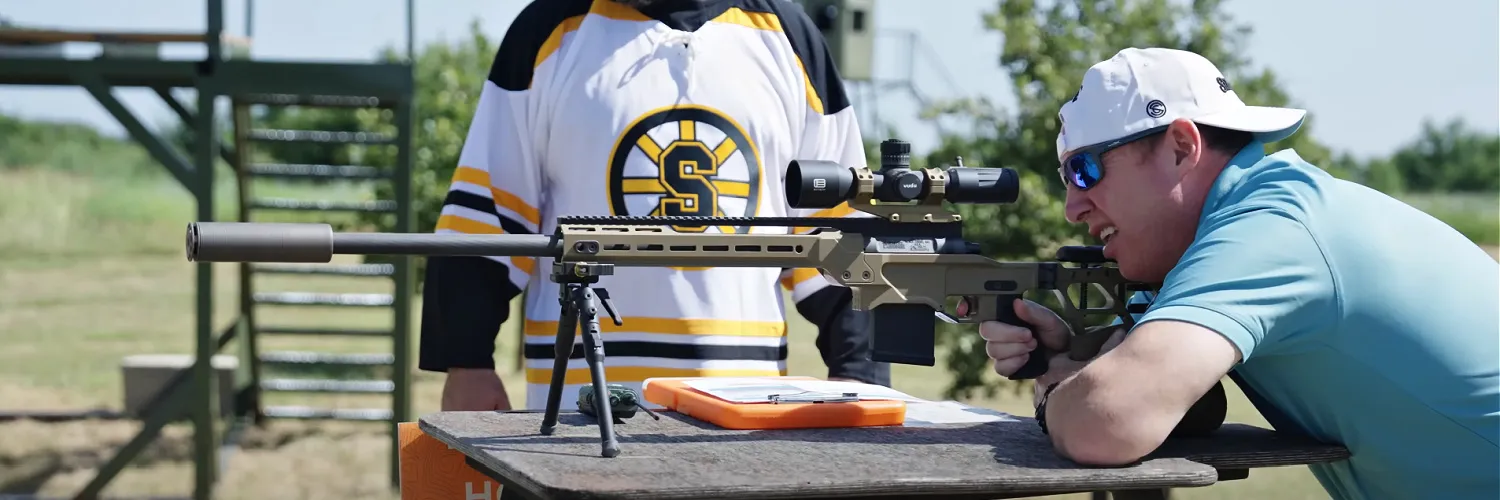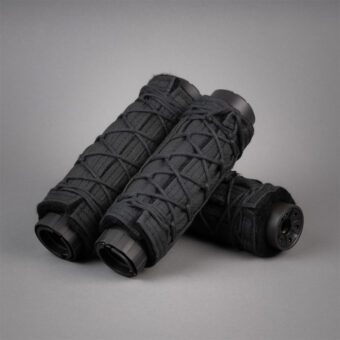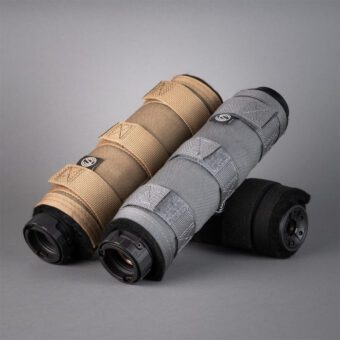Home / Silencer & Gun News / Arsenal Blog 006: Sterling 9MM
Arsenal Blog 006: Sterling 9MM
Home / Silencer & Gun News / Arsenal Blog 006: Sterling 9MM
Arsenal Blog 006: Sterling 9MM L2 Series
SILENCERCO’S ARSENAL SERIES showcases guns we love for various reasons that reside in our in-house arsenal. We are best-known for making guns quiet in order to do this, we must interact with a great variety of amazing platforms. In these posts we will tell you about each platform we like, why it’s different and relevant, and why we think it belongs in our pantheon of greatness.
The Sterling was designed by George William Patchett of Sterling Armaments Co. in 1942. The UK Ordnance Board saw potential in the design and it was considered in 1945 as a replacement for the Sten. In 1953 it became the standard issue submachine gun of the British Army and became known as the L2A1 and L2A3 but retained the Patchett name on official Documents. However, it was most commonly known simply as the Sterling.
Despite the broad resemblance to the Sten because of the side-mounted magazine, the Sterling was its own unique design. It used a tubular body that contained the the action, feeding mechanism, and iron sights (rear flip up and front adjustable). The barrel was shrouded by a perforated sleeve to help with heat dissipation and to act as a heat shield for the forward hand. The rear of the tube was capped by a folding skeletal metal buttstock that hinged along with its two connecting arms to fold under the receiver for a more compact travel setup. The L2A3 could go from 27 inches overall length with stock extended to 19 inches with the stock folded.
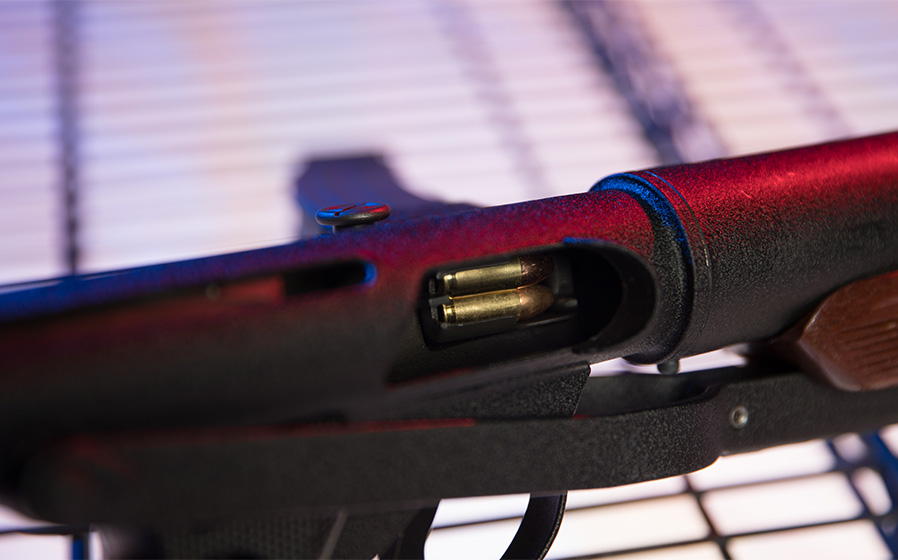
The Sterling had a 34-round curved magazine and could fire 550 rounds per minute out to a range of 220 yards and consistently hit a 1-foot square at 100 yards. Early prototypes used Sten magazine, but the curved magazines caused fewer malfunctions. Early Sterlings are still compatible with straight Sten magazines, but perform better with the curved version.
Like the Sten before it, the Sterling proved a popular submachine gun design all over the world. Operators included Argentina, Canada (as the C1), India (as the SAF Carbine 1A/2A1), Kenya, Lebanon, Libya, Malaysia, New Zealand, Nigeria, Pakistan, Philippines, Portugal, Singapore, Spain, and Zimbabwe, among others. The L2A3 variant saw service into 1990 until British forces formally replaced it with the new L85A1 5.56mm assault rifle. During that time, the L2 series provided dependable service for the British Army where it was known for durability and reliability even under the most difficult of operating conditions. In all, some 400,000 Sterlings were produced.
The integrally suppressed L34A1 sported an overall length of 34 inches and collapsed into a 26-inch form. Weight was 3.6 kilograms with a barrel length of 7.8 inches. While still holding a 550 rounds per minute rate of fire, the weapon managed a lower muzzle velocity of just 970 feet per second down from 1,250 feet per second on an unsuppressed model. This version uses a ported barrel surrounded by a cylinder with expansion chambers to reduce the velocity of the bullet so that it doesn’t break the sound barrier and thus cause a sonic crack. This design also decreased the muzzle blast and flash.
Finally, we would be remiss if we didn’t mention the Sterling’s role in popular culture as the basis for Storm Trooper blasters in the Star Wars series of movies.
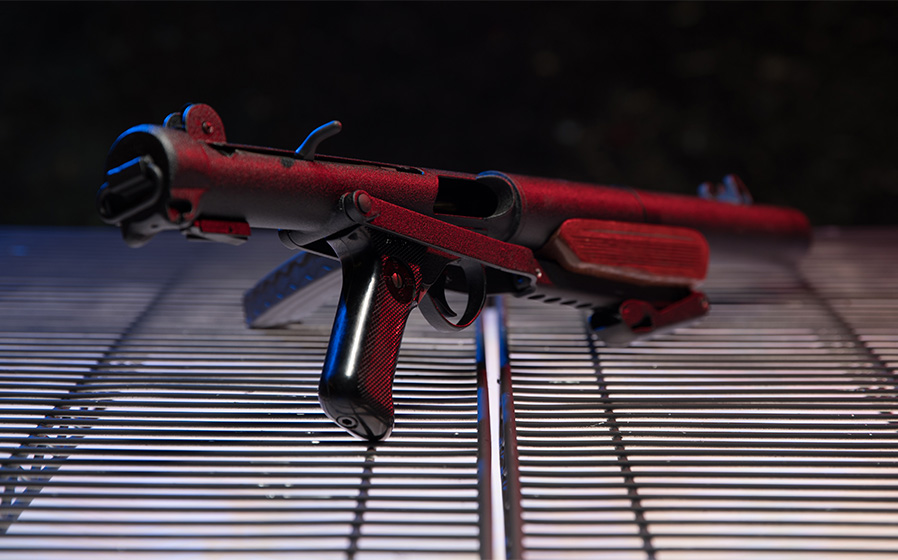
Things We Like
- Though it had a common blowback design firing from an open bolt, the Sterling did have advanced features for its time including a pistol grip at the weapon’s point of balance and helical ribs on the bolt to help keep the action free of dirt. There are also two concentric recoil springs which cycle the bolt, as opposed to the single spring arrangement used by many other SMG designs. This double-spring arrangement significantly reduces bolt-bounce when cartridges are chambered, resulting in better rifling engagement, smoother recoil, and increased accuracy.
- Disassembly of the Sterling is fairly straight-forward and simple. Once the butt cap is removed, all of the gun’s internals fall out of the back of the carbine with ease.
- The Sterling is light in part because its bolt assembly is lighter than most simple blowbacks. The cartridge is fired a fraction of a second before the round is fully chambered while the bolt is still moving forward. The firing of the round thus not only sends the bullet down the barrel, but simultaneously resists the forward movement of the bolt. Therefore, the energy of the expanding gases only has to overcome the bolt’s static inertia and spring resistance to push it backwards again and cycle the weapon. The lighter bolt makes not only for a lighter gun, but a more controllable one since there is less mass moving back and forth as it fires.
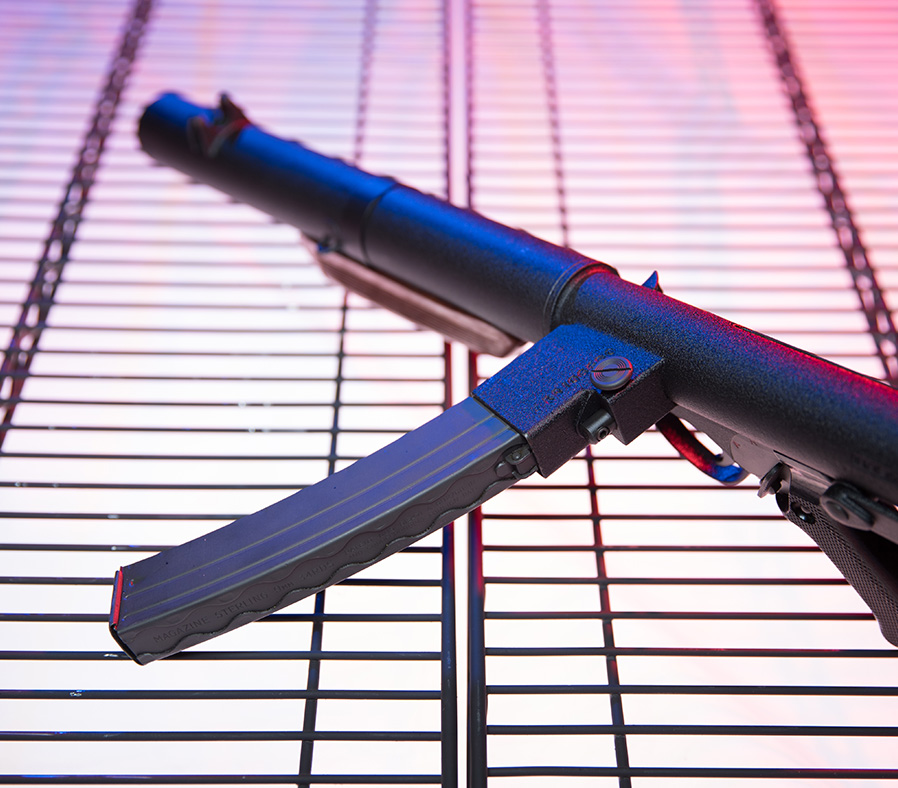
Things We Don’t Like
- The Sterling was well-known for a variety of problems, many of which were caused by poor maintenance. Carbon buildup on the face of the breech or debris in the bolt stopped many Sterlings from firing. If the operator didn’t clean the chamber on a regular basis, it was only a matter of time until they experienced a failure to feed.
- Firing the SMG by grasping the magazine with the supporting hand tended to wear the magazine catch, altering the angle of feed and causing failures to feed.
- When the folding stock is released, it will swing down towards the grip in a swift motion. The operator will need to remove their hand from the pistol grip assembly to allow the stock to move into place. It is very difficult to handle the Sterling during this transition.



